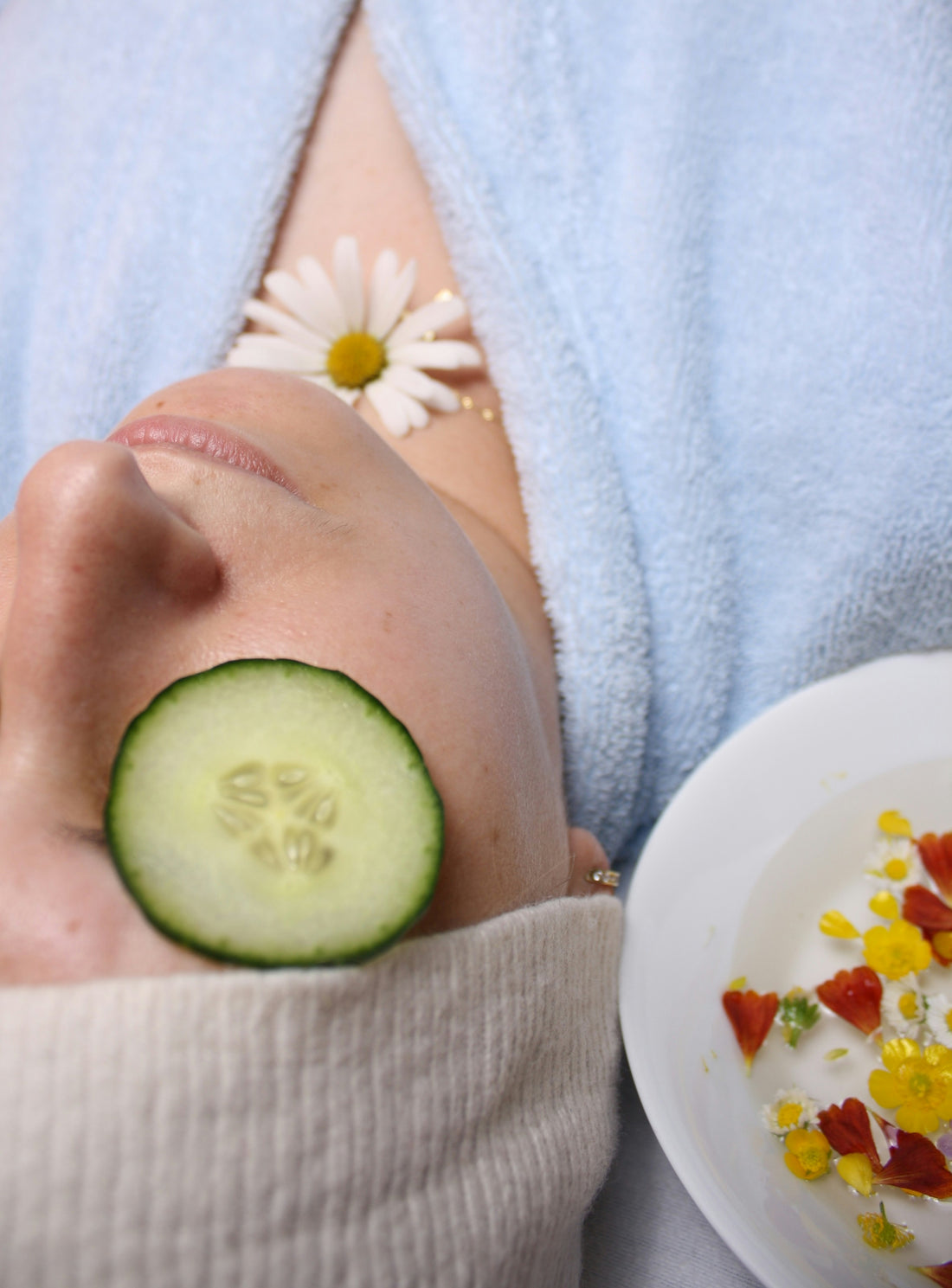
The Skin and You
Share
Great looking skin requires commitment and dedication; it is not a miracle. Genetic composition plays a role only to a certain extent. What is so special about the skin and you? What is a skincare routine? Excited to find out more?
We discuss basic aspects of keeping your skin happy, healthy, and satisfying. Happy reading!
Dedicated skincare routine pays off big time!
Our skin is a complex organ. It needs tender loving care from inside and out. Read more about skin facts, fun, myths, and more in our recent blog post.
Skincare is a unique part of caring for our bodies. A healthy diet provides the necessary tools to nourish the skin through the bloodstream. But, the rest depends on your ability to develop a dedicated skincare routine. How do you define a skincare routine? Before answering this question, we must know a bit more about our skin type.
Assessing your skin type
What is skin type?
The skin is generally defined as normal, dry, oily, and combination type. Skin tone has no major relation to skin cleansing.
|
Skin type
|
Feeling
|
|
Normal skin
|
Feels little stretched, dry or oily
|
|
Dry skin
|
Feels tight and scaly
|
|
Oily skin
|
Thin, shiny oily layer, clogged pores
|
|
Combination skin
|
Some dry and some oily areas
|
Dry skin is prone to early wrinkle development. Oily skin is resistant to wrinkles and sagging as the oils provide a natural moisturizing effect. Oils help connective tissue between skin cells stay healthy.
What about “sensitive skin”?
There is no standard description of sensitive skin. But the skin is sensitive when irritation or inflammation of the skin occurs by using a product, environmental exposure. Sensitive skin is particularly challenging to care for. It may take some time and a detailed observation for you to find out if you are allergic to a particular product or one of the ingredients.
The most common cause of skin irritation is chemicals, colors, dyes, and fragrances added for improving a product’s appearance. Synthetic preservatives, phthalates, sulfates, urea, and others cause skin irritation. One may have to opt for non-irritating formulas when choosing cosmetic products. Example here.
How to test for sensitive skin?
A patch test on your inner forearm is a simple method to test your skin’s sensitivity to a new product. If no reaction noted in 24 hours, it is wiser to apply the product behind one of the ears and check further in 24 hours. If no reaction occurs, it is safe to use the product. Avoid confusion by testing one product at a time.
The skin and you- periodic assessment
Skin’s interaction with skincare and cosmetic products is dynamic. Sensitivity may develop over time and present weeks to months after you start using a product. Make a detailed observation of how your skin feels and appears when changing brands, product categories, or even newer versions of your all-time favorite product!
Why do I need a skincare routine?

Basic Skincare Routine:
- Cleansing
- Complexion Balance
- Moisturizing
Your skin will remain plump and glowing longer with a dedicated skincare routine. Taking good care of your skin will delay the appearance of wrinkles, uneven tone, and other skin issues. Also, a beauty routine allows you to watch your skin daily and pick up issues earlier. Prevention is better (and cheaper!) than cure; prompt attention to a skin problem will save you money and hassle in the long run.
Benefits of skincare routine
Are you determined to take care of your skin? A dedicated skincare routine provides counteraction to various harmful factors affecting your skin. This balancing act is important to maintain youthful skin. A complete skincare routine will achieve passive exfoliation, resurfacing, rejuvenation, and moisturizing.
Great looking skin is the easiest way to boost your confidence, all year round. Remember those compliments from friends and others to you well hydrated, well-rested, supple skin?
Steps for fundamental skincare
Skincare’s goal is to tune up the skin’s complexion and appearance, and extra details to areas needing more work.
Develop a habit.
Keep the routine simple. Add twists to adapt to changes in your lifestyle and seasons. Follow the routine daily. In the end, our skin will reward you!
Cleansing the skin.
It is the washing of your skin. A good cleanse removes dirt, and chemicals without harming the skin’s structure, moisture, or friendly oils. Cleansing the skin twice a day, particularly the exposed areas are essential to avoid clogged pores and uneven tone. The choice of cleanser depends on your skin type.
A pH neutral, non-irritating face wash is suitable for all skin types. Organic ingredients provide natural cleansing.
Be generous with water. Do not rub hard with a towel. Use a fresh washcloth made of cotton and pat dry the skin. Spend a few minutes observing your skin as it dries completely. You will be able to pick up issues early if you are observing daily.
A face wash should leave your skin just clean with slight hydration. Your skin should feel just a bit dry but not super dry. If excessive dryness occurs, reduce the amount of product.
Complexion balance
After a thorough cleansing, the skin should be nourished with nutrients and moisturized to remain soft and plump.
After a thorough cleansing, the skin will need replenishment to recover and repair. This is achieved with skin toning. A skin toner refers to specific nutrients that are delivered into the skin for better absorption.
Skin serum and more
Like skin toners, skin serums deliver dedicated agents directly into the skin that fights irritation, inflammation, and dryness.
Moisturizing the skin
Cells of the outermost layer of the skin tackle exposure to pollution, dirt, and excessive sun exposure. Also, these cells cope with atmospheric and temperature changes. A moisturizer provides hydration to these cells and keeps them soft. A moisturizer also helps keep friendly oils and tissue network that keeps the skin cells together. A lotion is commonly used as a moisturizer.
Our skin cells lose the ability to keep moisture as they age. The ability of our skin to retain moisture reduces as we age. This is true for all skin types. So, we recommend a moisturizer for year-round use. A moisturizer such as Hyaluronic acid provides a deep moisturizing effect. Deep moisturizer is particularly helpful if daily activities and excessive washing create dry skin.
A well-balanced body lotion.
What is the role of fragrance?
What is a fragrance in cosmetics?
According to U.S FDA, fragrance imparts odor to a product. In reality, fragrance results in attraction and plays a significant role in the marketing of a cosmetic product. Natural fragrances are derived from the essential oils and used in small quantities to provide aroma to a cosmetic product.
How to check for fragrance in a cosmetic product?
Manufacturers are not required to disclose details of the fragrance (type, natural or synthetic). Some manufacturers list the exact substance used as a fragrance while others label “Parfum/perfume” or “Fragrance”. Take care while reading the ingredients to identify potential allergens. The back panel label of the product lists all ingredients including fragrance.
The truth about “unscented” products.
Many cosmetic products are labeled “unscented” or “hypoallergic”. A common belief is that such products do not contain any fragrance or perfume in it and are safe for use in people with allergies to fragrance. But these products often contain a small amount of fragrance (a.k.a. masking fragrance) to hide the unpleasant smell of other ingredients. Be sure to read the ingredients and perform a patch test before using such products.
Less is more.
All-in-one products.
Cosmetic companies often label an all-in-one solution to promote a single product. However, one is satisfied if a product is tailored to one’s skin type. Consider using a product with a relatively small amount of ingredients to minimize irritation. Choosing a product with a single main ingredient is often more effective!
The Power of Patience and observation.
Once you start using a product, it takes time for your skin to change its appearance. The time frame varies anywhere between two to eight weeks. Observe changes and compare them with photos taken before starting the product and every week. This is the best way to test the effect of a product on your skin.
In summary, a well-treated (rather pampered!) skin will offer a great reward. One must be patient but it pays off!
What do you think? How do you practice your skincare routine? What are your favorite products? Feel free to leave a comment below. We hope that you found this blog post informative and useful. We encourage you to routinely visit our blog and share it with your family and friends.
Disclaimer- This website and any of its content, comment, writing, or authors/contributors/writers do not provide or suggest medical, legal, or professional advice, opinion, or service. The information shared on this website is not intended to diagnose, treat, cure, or prevent any disease.




